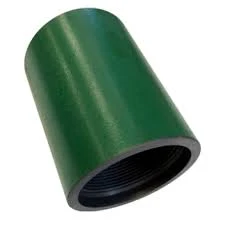- Afrikaans
- Albanian
- Amharic
- Arabic
- Armenian
- Azerbaijani
- Basque
- Belarusian
- Bengali
- Bosnian
- Bulgarian
- Catalan
- Cebuano
- Corsican
- Croatian
- Czech
- Danish
- Dutch
- English
- Esperanto
- Estonian
- Finnish
- French
- Frisian
- Galician
- Georgian
- German
- Greek
- Gujarati
- Haitian Creole
- hausa
- hawaiian
- Hebrew
- Hindi
- Miao
- Hungarian
- Icelandic
- igbo
- Indonesian
- irish
- Italian
- Japanese
- Javanese
- Kannada
- kazakh
- Khmer
- Rwandese
- Korean
- Kurdish
- Kyrgyz
- Lao
- Latin
- Latvian
- Lithuanian
- Luxembourgish
- Macedonian
- Malgashi
- Malay
- Malayalam
- Maltese
- Maori
- Marathi
- Mongolian
- Myanmar
- Nepali
- Norwegian
- Norwegian
- Occitan
- Pashto
- Persian
- Polish
- Portuguese
- Punjabi
- Romanian
- Russian
- Samoan
- Scottish Gaelic
- Serbian
- Sesotho
- Shona
- Sindhi
- Sinhala
- Slovak
- Slovenian
- Somali
- Spanish
- Sundanese
- Swahili
- Swedish
- Tagalog
- Tajik
- Tamil
- Tatar
- Telugu
- Thai
- Turkish
- Turkmen
- Ukrainian
- Urdu
- Uighur
- Uzbek
- Vietnamese
- Welsh
- Bantu
- Yiddish
- Yoruba
- Zulu
casing pup joint
Understanding Casing Pup Joints in Oil and Gas Operations
In the oil and gas industry, the integrity and efficiency of drilling operations rely heavily on various components, one of the most critical being the casing pup joint. Casing pup joints play a vital role in the construction of a wellbore, particularly in managing the complexities associated with offshore and onshore drilling operations. Understanding their function, specifications, and applications is essential for optimal drilling performance and safety.
What is a Casing Pup Joint?
A casing pup joint is a short length of casing pipe used in conjunction with standard casing strings. Typically ranging from 2 to 10 feet in length, pup joints are designed to fill the gaps in drill strings and provide necessary adjustments to reach desired depths or to connect different sections of casing. While their size may seem minor relative to larger casing pipes, their role is crucial in ensuring the proper alignment, stability, and integrity of the entire casing system.
Importance of Casing Pup Joints
The use of casing pup joints is critical in various scenarios within drilling operations
1. Adjustment of Lengths During the installation of casing, it is often necessary to make precise length adjustments. Casing pup joints provide the flexibility required to achieve these adjustments, ensuring that the casing fits snugly into the desired formation without compromising the well's structural integrity.
2. Compensation for Expansion and Contraction Temperature changes during drilling operations can cause casing materials to expand or contract. Pup joints can accommodate these shifts, maintaining the overall stability of the casing string despite variations in temperature or pressure.
3. Facilitation of Complex Well Designs In fields where drilling may involve irregular formations or complex geometries, pup joints allow engineers to navigate challenges more effectively. They enable custom designs of the casing string tailored to specific geologic conditions.
casing pup joint

4. Preventing Hydrostatic Failures The risk of hydrostatic pressure leading to casing failures can be mitigated through the strategic use of casing pup joints. They help reinforce the overall structural integrity of the casing string, especially in deeper wells where pressure exerted by fluids can be significant.
Construction and Specifications
Casing pup joints are typically manufactured from high-grade steel and are designed to withstand the harsh environments commonly associated with oil and gas drilling. The specifications of pup joints vary based on their intended use, but they are generally characterized by their diameter, wall thickness, and thread type.
- Diameter Common diameters for casing pup joints range from 2 3/8 inches to 20 inches, providing adaptability for various drilling operations. - Wall Thickness The thickness of the pup joint also influences its pressure rating and durability, with thicker options providing increased strength. - Thread Type Various thread types are utilized depending on the requirements of the drilling operation. Common thread designs include Buttress threads and American National threads, which allow for secure connections.
Applications in Drilling Operations
Casing pup joints are employed in numerous applications throughout the drilling lifecycle. They are essential during the following processes
- Casing Installation Pup joints help achieve the required casing length during the installation phases, particularly in complex drilling scenarios. - Remedial Operations In instances where repairs or modifications to existing casings are necessary, pup joints can be inserted to enhance the integrity of the wellbore. - Production Tubing Pup joints may also be employed in production tubing, helping to optimize oil and gas flow from the reservoir to the surface.
Conclusion
Casing pup joints, though small in size, play a significant role in the overall success and safety of drilling operations in the oil and gas industry. Their ability to provide flexibility, accommodate changes in conditions, and enhance the stability of casing strings makes them an invaluable component within modern drilling practices. As the industry continues to evolve, the ongoing development and optimization of pup joints will remain crucial in meeting the demands of increasingly complex drilling environments. Understanding their applications and significance will thus inherently contribute to the proficiency and safety of oil and gas operations globally.
-
Tubing Pup Joints: Essential Components for Oil and Gas OperationsNewsJul.10,2025
-
Pup Joints: Essential Components for Reliable Drilling OperationsNewsJul.10,2025
-
Pipe Couplings: Connecting Your World EfficientlyNewsJul.10,2025
-
Mastering Oilfield Operations with Quality Tubing and CasingNewsJul.10,2025
-
High-Quality Casing Couplings for Every NeedNewsJul.10,2025
-
Boost Your Drilling Efficiency with Premium Crossover Tools & Seating NipplesNewsJul.10,2025







